The Google Pixel 3 Review: The Ultimate Camera Test
by Andrei Frumusanu on November 2, 2018 11:00 AM EST- Posted in
- Smartphones
- camera
- Mobile
- Pixel
- Snapdragon 845
- Pixel 3
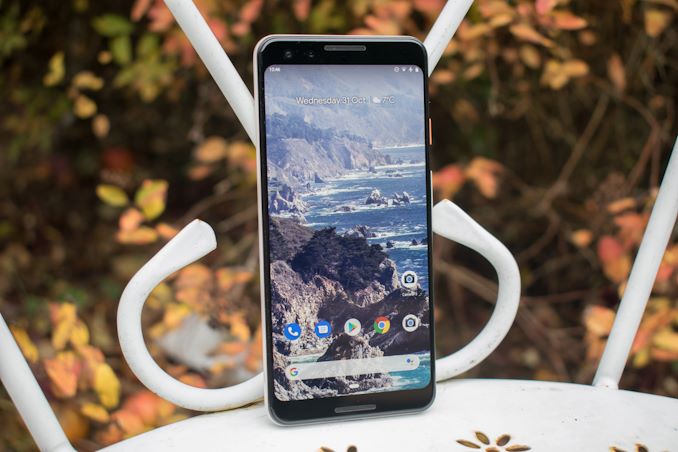
The Pixel 3 is Google’s third generation in-house design, meant to showcase the company’s own view of what an Android device should be, whilst fully embracing Google’s first-party software applications and services. The one thing Google’s Pixel phones have become synonymous with is the camera experience. The Pixel 3 continues this focal point of the line-up, and promises to be “the best smartphone camera”, period.
Alongside Google's forte, software, this year's Pixel family has pushed forward with a few hardware design choices, some of which we might have liked to have seen last year. The new units have updated panel technology, integrated wireless charging, and even fast wireless charging. Also now for Google, the Pixel 3 actually looks like a current flagship smartphone, compared to the Pixel 2 which did not at the time.
This year’s Pixel 3 phones hope to maintain the software advantages, doubling down on them with various new innovative features, especially on the camera side, whilst addressing the hardware aspects to be considered a true vendor flagship of a very competitive generation.
In this full analysis of the Pixel 3, we'll cover the hardware, the design, the software, and a detailed look to what makes users rave about the camera. We've tested over 18 current and former high-end smartphones worth of cameras to get to our conclusions, with all the analysis contained within these few pages. Commentary is of course, more than welcome.
It should be noted that for this review, unfortunately we only were able to get our hands on a regular Pixel 3, colored in 'Not Pink'. We do hope that sometime in the future we’ll be able to do a battery update on the bigger Pixel 3 XL once we’re able to source one.
Pixel Hardware and Design
In terms of hardware specifications, the new Pixel 3 family follows the many Android flagships trend of this year: at the heart of the phones, the Snapdragon 845 SoC is powering the devices. 2018 has been an excellent competitive year for Qualcomm and the S845 was able to take the performance lead among its Android competition. One thing to note here if you’re considering a Pixel device is that Google’s release schedule is very much out of sync with the silicon vendor’s SoC lineups - meaning users investing in a Pixel are buying a flagship phone whose silicon is by now 8 months old, and will most likely will be superseded by its successor in just a few months’ time. For those that want the leading edge, the Pixel 3 might be a short lived experience. However that doesn't detract from what is under the hood today.
| Google Pixel 3 Family | |||
| Pixel 3 (reviewed) | Pixel 3 XL | ||
| SoC | Snapdragon 845 4x Kryo 385 Gold (Cortex A75 based) @ 2.80 GHz 4x Kryo 385 Silver (Cortex A55 based) @ 1.76 GHz |
||
| GPU | Adreno 630 @ 710MHz | ||
| DRAM | 4GB LPDDR4X | ||
| Display | 5.5" AMOLED 2160 x 1080 (18:9) |
6.3" P-OLED 2960 x 1440 (18.5:9) |
|
| Size | Height | 145.6 mm | 158.0 mm |
| Width | 68.2 mm | 76.6 mm | |
| Depth | 7.9 mm | 7.9 mm | |
| Weight | 148 grams | 184 grams | |
| Battery Capacity | 2915mAh | 3430mAh | |
| Wireless Charging | Qi | ||
| Rear Camera | 12.2 MP, f/1.8, 27mm (wide), 1/2.55", 1.4µm, OIS, dual pixel PDAF |
||
| Front Cameras | Dual 8MP modules Regular f/1.8 75° & wide angle f/2.2 97° FoV lenses |
||
| Storage | 64 GB / 128 GB | 64 GB / 128 GB | |
| I/O | USB-C | ||
| Wireless (local) | 802.11ac Wi-Fi + Bluetooth 5.0 LE + NFC | ||
| Cellular | CAT 16 (1Gbps DL / 75Mbps UL), 5x DL CA, 4x4 MIMO, LAA, 256-QAM DL and 64-QAM UL |
||
| Splash, Water, Dust Resistance | IPX8 (Water resistant up to 1m) |
||
| Dual-SIM | nano-SIM | ||
| Launch Price | 64 GB: $799 / £739 / 849€ 128 GB: $899 / £839 / 949€ |
64 GB: $899 / not avail. / 949€ 128 GB: $999 / £969 / 1049€ |
|
Google also outfits the Pixel 3’s with relatively conservative DRAM and storage options. Both phones come with 4GB of RAM as well as a base storage variant of 64GB, with the option to buy a higher tier 128GB variant. Most of Google's competition are offering 6GB+ versions at similar pricing it should be noted.
In order to combat this low memory, one new hardware/software feature is an application memory management 'lowmmemorykiller' background application/daemon which applies various settings to keep certain software in memory for fast app loading times. Whilst in general I don’t put as much value into this as some other people do, I did however notice that in everyday use the phones did need to reload applications more often. There have been user reports already that the phones are struggling to keep things open and alive in memory. No doubt additional tuning of the memory management will be done through updates and the lifecycle of the unit.
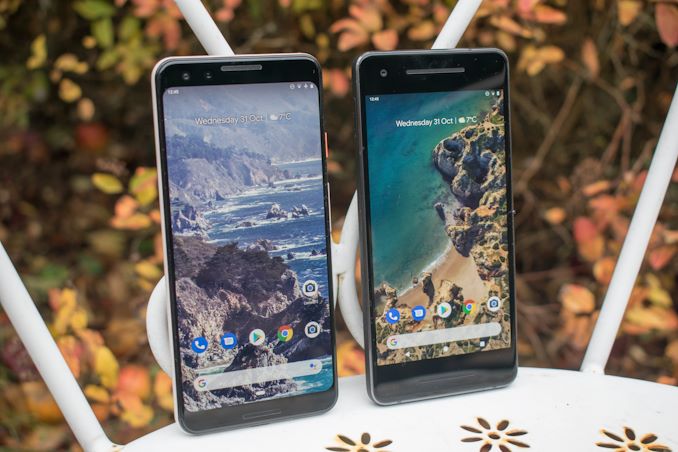
Pixel 3 (left) and Pixel 2 (right)
Design-wise, the Pixel 3 is a big upgrade over the Pixel 2. Gone are the 2015 top and bottom bezels, and instead we find a more contemporary design with an elongated 18:9 (or 2:1) aspect ratio screen, vastly increasing the screen-to-body ratio of the phone. The screen is still an OLED with an FHD+ resolution (2160 x 1080 pixels) – though this year it seems that Google has split suppliers between the small and XL variants, with the Pixel 3 panel now being manufactured by LG while the Pixel 3 XL uses a Samsung panel.
On the front of the device, we luckily don’t need to go into any big controversial discussions about a notch as the small Pixel 3 (As opposed to the 3XL) doesn’t have one. What is new for both of the Pixel 3 smartphones is a secondary wide-angle front-facing camera, allowing for wider selfie shots or simply a wider field of view when doing front video recording or communications, which is actually quite handy.

Pixel 3 (left) and Pixel 2 (right)
On the back of the phone, we also see a big design change: Google has switched over from a metal unibody design with a top glass cut-out, to a full glass back panel. Google still maintains the same contrasting glossy glass design feature at the top of the phone, and achieves this by chemically etching the bottom part of the glass to a matte finish.
The matte feel of the glass is extremely similar to the design of the OnePlus 6’s etched models, and it does stand out as a completely different feel than one might be used to from glass phones. It really helps with the grip, and totally avoids fingerprints. My only issue here is that Google didn’t extend this finish to the very edges of the glass back, as well as leaving out a 1mm ring around the fingerprint sensor, the latter whose shadows on the glass looks very odd and a bit cheap.
Going for a glass back allows Google to now adopt wireless charging, and supports the Qi standard. The phone also supports fast wireless charging up to 10W. Unfortunately again, it seems that Google is only allowing this on certified chargers, thus not really adhering to the Qi fast-charging standard. This means almost all existing 'fast' wireless chargers will be limited to 5W.
Google bundled its own Pixel Stand wireless charging pad with the reviewer kits (It's not bundled with commercial units), and it works as well as it says on the box. One big hiccup I noticed is that the Stand will only accept certain USB-C chargers with PD at certain voltages – so users are restricted to the bundled power supply as well as a limited number of USB C PD chargers to even power it on at all.
It should be noted that the glass on the rear has some flex even under light pressure, and I can hear it touching the internals (charging coil and battery). This was one of the first things I noticed when unboxing the phone, and it makes it feel a lot less well built as for example glass backs from Samsung or Apple.
The camera on the Pixel 3 sees a minor sensor upgrade from the Sony IMX362 to the IMX363 – both units are 12.2MP sensors with 1.4µm pixel pitches. The aperture is also the same at f/1.8. There are no secondary modules here, and Google prefers to fall back to software innovation for improving zoomed in pictures: the Pixel 3 exclusively ships with a new “Superzoom” mode that promises to improve digital zooming, more on this later in the camera section where we’ll have a very big comparison with most of this year’s flagship devices.
The left side of the phone is bare of any buttons, and we find the power and volume rocker on the right side. Google accentuates the colour of the power button, on my “Not pink” pink unit this is a very neon orange that just doesn’t pop up in images as much as it does in real life.
On the top of the phone we find a microphone hole.
The bottom sees the single nanoSIM slot as well as the USB-C charging port. Like on the Pixel 2, the Pixel 3 units do not offer any headphone jack. One argument for the removal of the headphone jack, beyond the by now debunked claim that it offers larger internal space dedicated to batteries, is that it allows for better audio quality. Indeed if headphones have their own DACs built-in, then they can be calibrated to the sound profile of the individual headphones, instead of relying on the phone to serve a correct frequency response. That being said, unfortunately the USB-C earbuds bundled with the Pixel 3 are among the worst I’ve ever listened to and can be easily described as complete rubbish. I would easily choose USB-C earbuds from any other primary smartphone vendor.
In the rest of this review, we cover the following:
- Introduction and Design (this page)
- System Performance
- GPU Performance
- Display Measurements and Calibration Testing
- Battery Life and Power
- Camera pt 1: Daylight with SuperZoom and Scenic
- Camera pt 2: Daylight with Dynamic Range
- Camera pt 3: Low Light and NightSight
- Camera pt 4: Video Recording and Speaker Evaluation
- Pixel 3 Conclusion


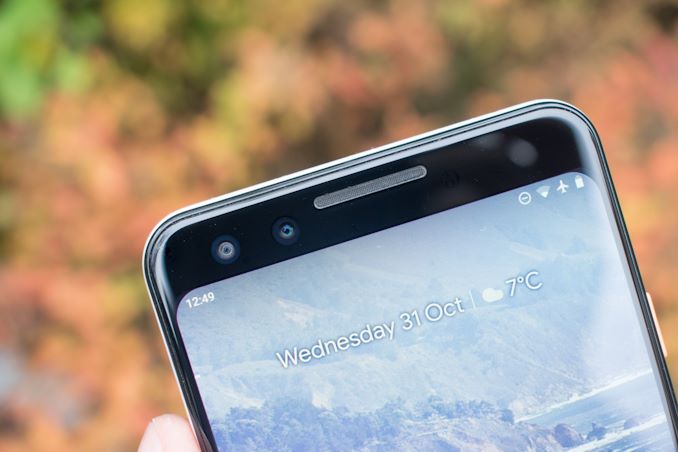


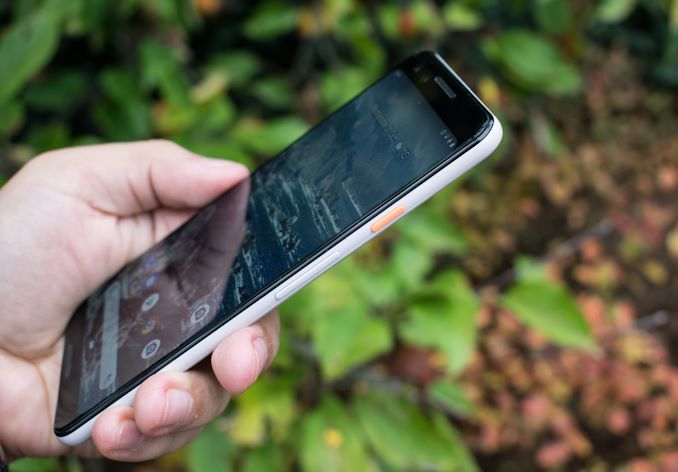
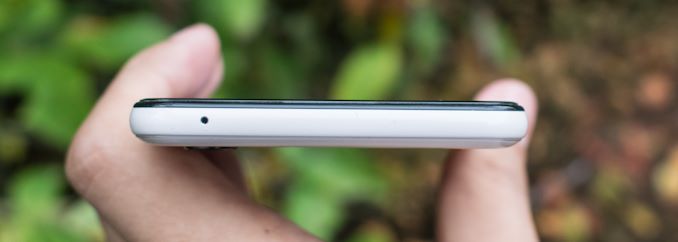









135 Comments
View All Comments
zanon - Saturday, November 3, 2018 - link
>"But we're not on version 1.0 of Bluetooth, we're on version 5.0 and it's still not great."It is great (or at least getting close) from some vendors, which shows that the technical foundation is there. Once that exists the only real way to have progress happen sustainable is to have a market for it so hundreds to thousands of attempts will be made, most of which will be mediocre, but some of which will be good and then get copied/followed in turn. To your own point:
>"Lots of people use Wi-Fi even though wired ethernet still exists."
WiFi was introduced *20 years ago*. Yes, 1998. And it stunk. It was a long time before it even achieved the kind of technical spec it needed, 802.11n took 11 years, 802.11ac took 15 years. Both came after smartphones and notebooks overtaking desktops, demand drove innovation and pricing. Of course, even now in 2018 a lot of WiFi stuff on the market is still junk and will still give a bad experience, but at least there are good options.
I think a better example would be USB replacing PS2 & ADB ports. Wow were there a lot of howls over that. We're seeing some of the exact same thing now in fact with USB-C and TB3, and people raging about adapters and "everything was fine before" and the early pains of these standards (plenty of junk USB-C implementations). But the fact is USB-C is a nice connector that solves physical and speed problems.
>"I just don't think it's 100% there yet and removing wired connections doesn't seem to add anything to the phone."
I absolutely agree it's not 100% there yet! There is clearly a ways to go. But I also don't think it'll ever go from 20% or even 50% to 100% in one leap either, no matter when they started the first few versions would have compromises. But I've seen more progress in the last year then the last decade, and once people know that something can be done well it tends to drag up the industry because customers are less willing to accept excuses of "oh nobody can do this."
mrvco - Sunday, November 4, 2018 - link
Agreed. I have a couple pairs of BT headpones and the convenience is nice... until the battery runs out when I'm boarding an international flight. I'm still using a Pixel XL as my daily driver and just ordered an LG v40. I also have an iPhone 8plus for app testing / demos and keeping track of the dongle is annoying.I still haven't heard a compelling reason for removing the headphone jack beyond pedantic and otherwise pointless spec sheet glossing. I'll take a slightly thicker phone all day and everyday if it means a larger battery and the same goes for a phone with a headphone jack.
Arbie - Monday, November 5, 2018 - link
What a rant! But what could you do except blather about "forcing the future" and "a few generations will have to deal with compromises"? That malarkey lost all meaning long ago; maybe you missed the memo.I have a BT headset for when I want to listen and be mobile - only. Compared to my wired earbuds it's bulky, heavy, expensive, complex, requires setup, creates rub noise, *and* needs daily charging. Now - add a dongle with similar issues! In all those aspects, wireless is a regression even it if works flawessly. If we had only that, and someone invented wired phones, it would be hailed as a miracle because, where they are convenient, those have no equal.
So removing even the option of wired is stupid *unless* there is some major compensation for doing so. I don't see any, and you don't either.
nonig - Wednesday, November 14, 2018 - link
Rarely has a post resonated with me like this one has. I wholeheartedly agree.Back when Apple announced, that they'd be dropping the minijack I thought "damit!" as I almost just had gotten a decent headset for my phone. I like to listen to music and the thought of having to accept wireless only irked me.
On the other hand, I am a tech enthusiast and had two years prior gotten my first tenure and therefore a decent salary - so I thought to myself; why not splurge and get a 'real' high end headset? I got myself the Beoplay H8 (around $350 I think) and haven't looked back.
My only alternatives was the Airpods or a headset similar to the B&O (Denon, Bose, Sennheiser, B&W and so on).
To me, it marked my final maturity into the form of 'good enough'-adulthood. I don't need 'wannabe pro'-performance or other pseudo/placebo. It just has to work, be good enough and reliable. Never really being able to put it into words until I read your post - and I totally agree.
I too used to claim, that only wired was good enough, until I got used to the comforts of WiFi.
I too used to claim, that FireWire400/800 was infinitely superior to USB2.0/3.0, until I tried a newer USB3.0 external hard drive.
I too used to claim, that only the golden terminals on my SoundBlaster Audigy was good enough for my MP3's until I realized it just doesn't matter.
I too used to claim, that CDs was superior to AAC or whatever, until discovered the joy streaming music.
I too used to claim, that the only way to enjoy movies was on bluray, until I realized I just wanna watch movies and not bother with stupid intros, trailers, copyright/piracy splashes - Netflix, HBO, Youtube (still ads, but 5 seconds is manageable).
I too used to claim, that the only way to enjoy audio was on the B&W speakers via our NAD amp, until I realized bitrate doesn't determine how much I (or my kids) like a song or not.
So on and so forth.
Today, I just don't bother anymore.
Music is best enjoyed when I don't have to untangle stupid wires first. I just put on my headset, turn them on, and instant music or Airplay to our wireless speakers around the house - provided the kids hasn't hidden them somewhere.
I guess people don't like change (I'm not claiming that they're stuck up or something, just that sometimes change doesn't seem rational when 'the old stuff seems to work just fine') and I like your point.
Let's get back to serial and parallel ports, so much easier, when different things use different ports. Today, everything is USB and it can be soooo confusing.
Let's get back to when phones only used to be phones.
Let's get back to when cameras was cameras.
Let's get back to when portable music devices used cassette tapes.
Let's get back to when cars was jump started by hand.
Let's get back to using horses. Less pollution! (I honestly don't know, if replacing combustion based motor transportation with live stock would decrease pollution - XKCD/Randall are you reading this?)
Anywho.
All I wanted to say was; I agree.
erple2 - Thursday, November 22, 2018 - link
I'm not that averse to new tech, provided it eventually (fairly quickly) surpasses what it is replacing. In the case of bluetooth (version 5 no less), we're still not there yet. My cheap (~$20) bluetooth headphones don't always work, have issues with: mediocre sound, noticeable audio lag, and have to be charged, and don't really last that long on a charge. By contrast, my cheap (~$8) wired headphones always work, have mediocre sound, no audio lag, don't need to be charged, and don't cause a small (but noticeable) drain on my phone's battery life.Each of the other things you mentioned saddened me with the race to acceptance of mediocrity, though :( While I appreciate the conveniences of WiFi, I still plug my laptop in to wired connections when reasonably possible - it's just faster in all cases, and more reliable. That's kind of a problem with most new technology - I'm just not sure if the improved convenience of new technology always makes up for its shortcomings (hint: it only sometimes does).
amosbatto - Friday, November 30, 2018 - link
These kind of comments really annoy me. First of all, you are needlessly promoting planned obsolescence for no tangible benefit. Millions of headphones and speakers all over the planet will be thrown away for no good reason, except that Apple figured out a way to make more profits selling us dongles and Beats wireless headset. I have a hi-fi system that I bought in high school which will never work with Bluetooth. You are telling me to throw out a $1000 system, just because it doesn´t work with Bluetooth and replace it with Bluetooth speakers of lesser quality.Bluetooth´s quality still isn´t as good as a wired audio. I have had very bad experience with Bluetooth ear buds. First, I bought some Apple-style ear buds, that don´t have a wire. Two days later, I was washing dishes and it slipped out of my ear and fell in the sink and the water destroyed it. Next, I bought a Bluetooth set with wires connected to a magnetic clip. I´m guessing that the clip wasn´t strong enough, because I lost it when walking. These experiences have convinced me to return to wired ear buds.
imaheadcase - Saturday, November 3, 2018 - link
What are you having problems with wireless? Every smartphone i've had i've used the bluetooth all the time and never had a issue with it.Wireless is just plain silly to have now-a-days, wireless is better for working, running, pretty much all aspects.
ummduh - Saturday, November 3, 2018 - link
Literally every bluetooth connection I have is problematic. I only have 2 left due to having so many issues with it. I HATE BT. I don't know who's fault it is, the accessory devices' implementation, or differences in phone manufacturers' implementation, but it doesn't really matter. I consistently have problems with it. It never just works for me.cfenton - Saturday, November 3, 2018 - link
I have connection issues. When I turn my headphones on, sometimes they only grab the call audio output, but not the media audio output. I have to go into my bluetooth settings to fix it and that's a hassle, especially when I'm out in the winter with gloves on.Impulses - Saturday, November 3, 2018 - link
I'm not gonna defend dropping the jack, but these instances where people swear they have to fiddle with settings each and every time they pair BT stuff can only be due to two things... Bad software (some phones/devices do have a shitty BT stack, and Google is often on the latest which doesn't always play nice with older stuff) AND/OR an incredibly noisy RF environment. I don't often encounter the latter, but I don't live in an apartment or the middle of NYC.